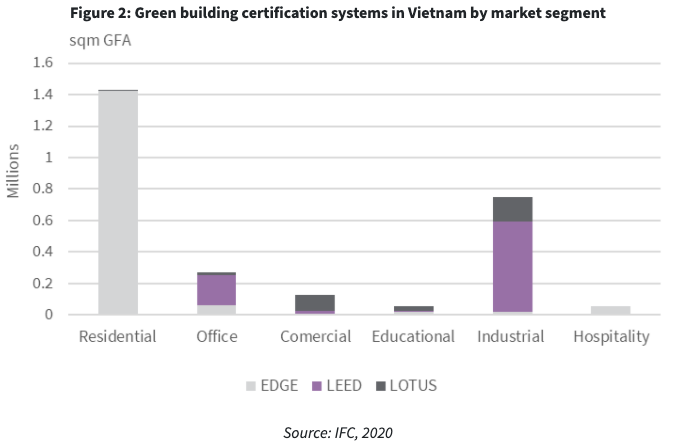Vietnam’s construction industry is embracing a new era of sustainability. This is driven by both environmental concerns and the rising demand for energy-efficient buildings. Sustainable Building Practices Vietnam are now at the forefront, transforming the way projects are designed and built. From eco-friendly materials to energy-efficient designs and green certifications, the country is making strides towards a greener future.
In this article, we explore how these practices are shaping Vietnam’s construction landscape and the benefits they offer to developers.
Building a Greener Future
The backbone of sustainable construction lies in the use of eco-friendly materials. In Vietnam, there is a strong push toward reducing the environmental impact of construction projects. According to the Ministry of Construction, about 40% of energy resources are consumed by construction projects. Meanwhile, they account for 50% of the nation’s greenhouse gas emissions. The government then encourages the use of renewable and recycled materials, which are less harmful to the environment.
One example of these sustainable materials is fly ash, a byproduct of coal combustion. This material is being used to create eco-friendly concrete. Companies like Duyên Hải DGM Green Materials are producing unbaked tiles made from fly ash. Not only reduces waste, but fly ash also lowers the carbon footprint of construction projects. The use of fly ash in concrete can enhance its strength and durability while reducing the amount of cement required.
Unfired bricks are also gaining popularity as an eco-friendly alternative to traditional fired bricks. These bricks are made from natural materials like clay and do not require high-temperature firing. As a result, energy consumption and greenhouse gas emissions during production are reduced. Other bio-based materials are being used to lower the carbon footprint of construction projects.
Cutting Down Energy Consumption Efficiently
Energy efficiency is a key focus of sustainable construction in Vietnam. Through various government initiatives, builders are encouraged to implement energy-efficient designs in their projects. The Vietnam Green Building Council plays an active role in promoting these designs, offering certifications like LEED and EDGE to incentivize sustainable building efforts.
Buildings designed with energy efficiency in mind often use passive strategies, such as maximizing natural ventilation and sunlight. For example, large windows that allow natural light can significantly reduce the need for artificial lighting, thus cutting down electricity usage. These designs not only reduce energy costs but also create healthier, more comfortable environments for people.
Green Building Certifications in Sustainable Building Practices Vietnam

Green building certifications have become a vital part of the construction sector in Vietnam. As of 2023, there are more than 300 green-certified buildings in the country, and this number continues to rise as more developers seek certification. These certifications, such as those offered by the Green Building Council Vietnam, signal a commitment to sustainability. Buildings are considered more attractive to eco-conscious buyers and tenants.
A Smart Investment
While the upfront costs of sustainable building practices can be higher—ranging from 5% to 25% more than traditional methods—the long-term benefits often outweigh the initial expenses. Energy savings, lower maintenance costs, and improved market value are just a few of the rewards for developers. Green buildings tend to attract tenants who are willing to pay more for eco-friendly spaces, increasing their market competitiveness.
Moreover, aligning with Vietnam’s goal of achieving net-zero emissions by 2050 helps developers stay ahead of regulatory requirements and future-proof their projects.
Vietnam’s journey toward sustainable construction practices marks a significant shift in the industry. By embracing these Sustainable Building Practices Vietnam, the country’s construction industry is not only addressing pressing environmental challenges but also unlocking new economic opportunities. At the end, sustainable construction can benefit the economy and the planet.

